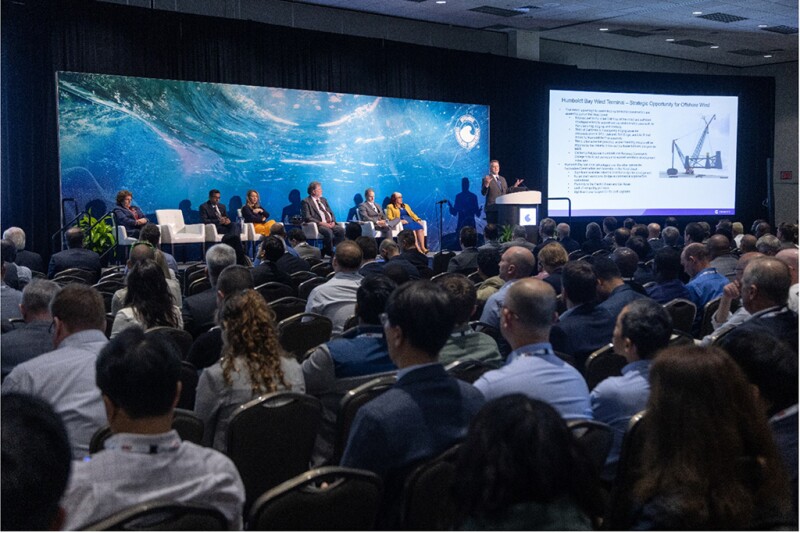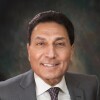The Annual Technical Conference and Exhibition (ATCE), SPE’s flagship event, will be held in San Antonio, Texas, from 16–18 October. I encourage all members to seriously consider attending ATCE this year to benefit from the knowledge sharing presented by fellow members across all disciplines of petroleum engineering.
Some SPE conferences are topically focused, such as the reservoir simulation, hydraulic fracturing, and HSE conferences. ATCE, on the other hand, is the conference where all petroleum engineering and related disciplines are discussed and serves as a barometer to help professionals gauge which specific competencies are needed now and in the future. It is also important that we are aware of the developments and the changes in other technical areas and of the directions our industry is taking based on the changes in economic, political, and technical arenas. ATCE is an excellent venue for all of us to obtain a broad range of information and trends.
I am sure that most of our members are also aware of the additional benefits that may be obtained through attending ATCE. We know of the extensive exhibits where service, technology, and manufacturing companies provide members with the latest developments and enhanced products. Some national and international organizations show their work and major projects. All discuss developments that are affecting our profession and provide guidance about what we need to know to continue having successful and enjoyable careers.
Another advantage of attending ATCE is the ability to network with our colleagues and friends throughout the industry. We usually get a chance to meet with friends that we have not seen for a while and to create new friendships with members that we meet during the conference.
One of my favorite activities during ATCE is the alumni receptions. I always look forward to catching up with my classmates from my universities and learning from their experiences. This year, ATCE promises to provide all the benefits I just described as we welcome people back to our in-person events after the COVID-19 pandemic. It is encouraging that more and more of our members are coming back and attending events after we lost this opportunity for several years.
As a member of the SPE Legion of Honor, I had the opportunity to attend numerous ATCEs starting with my first conference in 1973 held in Las Vegas. I’ve attended and enjoyed every ATCE since then, minus one I was unable to attend in Calgary.
I would like share with you some of the history of ATCE since its inception in 1924. The conference in San Antonio will be the 100th edition of ATCE. As most of our members know, SPE was originally the petroleum branch of the American Institute of Petroleum and Metallurgical Engineering (AIME). It became its own society in 1957, and in 1958, ATCE was held in Houston. The event rotated between several US cities since and was held for the first time outside the US in Florence, Italy, in 2010.
Since SPE became an independent society, ATCE was held 16 times in Houston, 11 times in Dallas and New Orleans, eight times in Denver and San Antonio, three times in Las Vegas, twice in the Los Angeles area and Dubai, and once in San Francisco, Washington DC, Florence, Italy, and Amsterdam.
An interesting fact about ATCE attendance: It does not necessarily reflect the ups and downs of our industry. Attendance sometimes increases when there is a downturn in the industry, which may be an indication that members desire to make more presentations and increase networking to improve their chances of retaining their jobs.
The highest attendance of ATCE over the years was more than 10,000 attendees in Houston in 1984 and in 2015. In 1998, Hurricane Georges hit New Orleans, resulting in the cancellation of ATCE. However, there were many of us who had already arrived in the city before the hurricane in preparation for the event and were trapped in hotels downtown. We had nowhere to go with travel out of the city shut down, so we all got together and decided since we had already prepared our presentations to go ahead and present to each other in the hotels. This was a unique and extremely informative experience. We had a chance to listen to presentations outside our areas of expertise. I remember that I heard more drilling talks during this meeting than in any other place since I usually attend talks in the area of reservoir engineering. We actually had a meeting. Although the conference was officially cancelled!
ATCE will continue to be the flagship meeting of our Society as it has all the advantages and services that benefit our members. I encourage all of you to do the best you can to attend ATCE this year and beyond.

Industry Activity
The activities in the energy industry, in our organizations, and our companies are trending back up and getting excellent financial results. Additionally, with the attention in the energy landscape on climate change issues and the continued developments in new forms of energy, we find there is a continuous recalibration of the activities of our companies to continue working and obtaining positive financial results in the traditional oil and gas business while devoting needed efforts in a practical way to both mitigating climate change issues and in developing new forms of energy. A look at some of the recent first‑quarter results can shed some light on that point and will remind all of us that there is no such thing as a constant trend in our industry. Activities will continue to be recalibrated, reflecting the changes in the world economy and the demand for our products.
Chevron announced financial results showing a profit of nearly $6.6 billion in the first quarter, an improvement over the first quarter 2022 ($6.3 billion) and $6.4 billion in the fourth quarter of 2022. “While commodity markets remain uncertain, our approach remains unchanged,” said Mike Wirth, Chevron’s chairman and chief executive officer. “Capital and cost discipline applied to advantage assets in both traditional and new energy businesses mean a steady return of cash to shareholders.” Wirth said that while diesel demand had declined, jet fuel demand had increased. “Gasoline demand is essentially back to pre-pandemic levels globally,” he said. “In Asia, we see demand coming back as China continues to open up and mobility increases.”
ExxonMobil reported a first-quarter profit of $11.4 billion, compared with $5.48 billion a year earlier. Earnings were down from the $12.8 billion earned in the fourth quarter of 2022. Darren Woods, ExxonMobil’s chairman and chief executive officer, expressed confidence in the future, though he said the global outlook for energy markets would depend heavily on China’s economic recovery. “Gasoline demand looks pretty reasonable,” Woods said. “Jet demand and transportation looks like it’s trending up. Expectations look pretty healthy.”
Shell reported adjusted earnings of $9.6 billion for the first 3 months of the year, comfortably beating analyst expectations of $8.6 billion. The company posted adjusted earnings of $9.1 billion over the same period a year earlier and $9.8 billion for the final quarter of 2022. Shell is also splitting up its renewables and low-carbon division as part of CEO Wael Sawan’s shake-up to boost the company’s returns. The changes come as Sawan, who took office at the start of the year, signaled that Shell is considering ditching oil-reduction output targets as part of its energy transition plans. The changes to the renewables business come 2 months after Sawan announced plans to combine the oil and gas production and liquefied natural gas divisions and place the renewables business in the downstream division.
In February, BP rowed back on plans to slash its 2019 oil and gas output levels by 40% by 2030, and now it envisages a 25% cut.
Saudi Aramco gained $31.9 billion in the first quarter of 2023 and paid $19.5 billion in dividends for Q4 2022 which is a 4% increase over the previous quarter. “The results reflect Aramco’s continued high reliability, focus on cost and our ability to react to market conditions, as we generate strong cash flows and further strengthen the balance sheet. Reinforcing our commitment to maximize long-term shareholder value,” commented Amin H. Nasser, Aramco president and chief executive officer. “We are also moving forward with our capacity expansion, and our long-term outlook remains unchanged as we believe oil and gas will remain critical components of the global energy mix for the foreseeable future.”
SLB reported revenue of $7.7 billion, an increase of 30% year on year; GAAP EPS of $0.65 increased 81% year on year; EPS, excluding charges and credits, of $0.63 increased 85% year on year; net income attributable to SLB of $934 million increased 83% year on year; and an SLB Board approved a quarterly cash dividend of $0.25 per share.
The figure shows the sustained increase in rig count following the economic downturn in 2015 and then the COVID-19 pandemic in 2020.
Another indication of the industry rebound is the increased attendance at this year’s Offshore Technology Conference (OTC). More than 1,300 companies from 104 countries showcased their technologies and equipment on the exhibition floor, spanning more than 276,000 ft2. In addition, countries from around the world brought together energy industry delegations to showcase the vast offshore energy opportunities globally on the exhibition floor. OTC was pleased to welcome more than 31,000 participants this year, a 30% increase from last year’s conference.

GEODE Funding
SPE and consortium partners Project Innerspace and Geothermal Rising were awarded $165 million in the first phase of the US Department of Energy’s (DOE) “Geothermal Energy from Oil and Gas Demonstrated Engineering” (GEODE) project.
This represents an example of some great progress on the second + of my Petroleum ++ theme, namely advancing additional energy sources.
Last July, the DOE announced its GEODE Funding Opportunity Announcement which would award up to $165 million to expand geothermal energy deployment by leveraging technologies and workforce from the oil and gas industry over 5 years.
The skills our members have in the drilling, completions, production, reservoir, data science, and HSE&S disciplines are critical to advancing geothermal and many of our members work in this space, as shown by our Geothermal Technical Section which is already 1,700 members strong.
SPE has a long history of identifying areas where technical advancement will benefit the industry and capturing the state-of-the-art technology. This project is clearly in line with our mission to disseminate technical information, and the SPE Board approved submitting a proposal in collaboration with two other not-for-profit societies, Project Innerspace and Geothermal Rising. This proposal pulls in the cooperation of a consortium of universities, national labs, SEG, AAPG, and industry.
I would like to thank the Geothermal Technical Section for expressing their desire to participate in the project and Silviu Livescu, Tim Lines, and John Boden for presenting to and obtaining the Board’s approval last October and for their hard work during October and November in drafting the proposal and working with our partners to build the consortium.
Around the World
Last month, SPE presidents continued to visit sections and chapters around the world both in-person and virtually. Kamel Ben Naceur visited SPE chapters and sections in Saudi Arabia, Romania, Thailand, and in Timor-Leste. I participated in meetings with Port Harcourt, Nigeria; Nazarbayen University Student Chapter in Astana, Kazakhstan; and Penn State Student Chapter in State College, Pennsylvania. Terry Palisch opened the Oklahoma City Oil and Gas Symposium, participated in Well Completions ATW in Scottsdale, Arizona, and visited the chapters at Florida A&M and Texas Tech.
Until next month!


